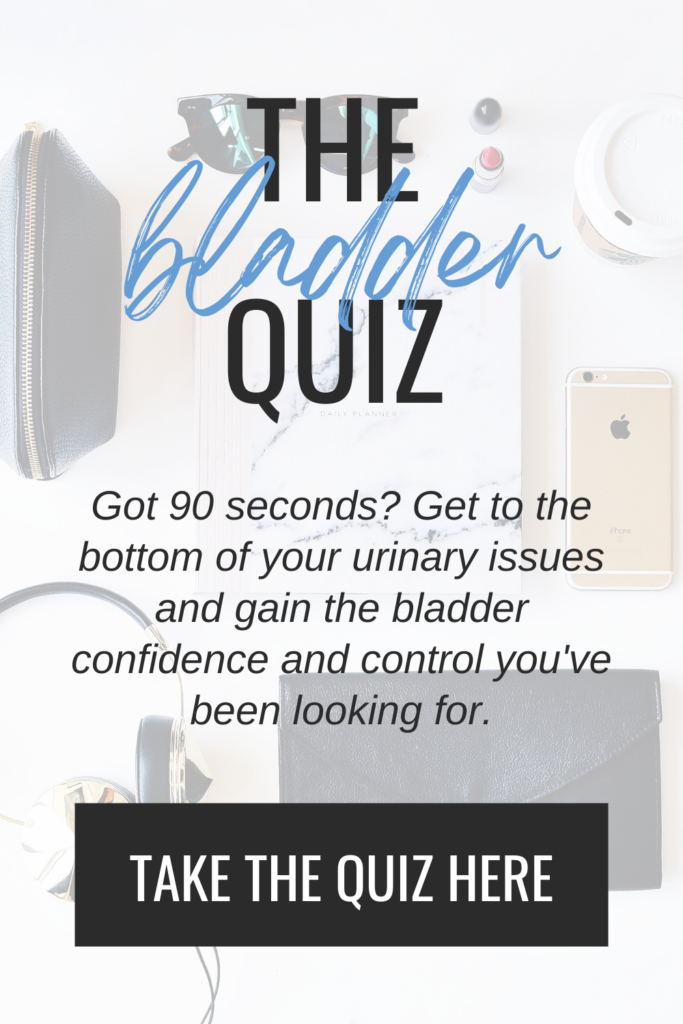Pain with intercourse is one of the top (if not thee top) complaints that bring people into my pelvic rehab clinic. Nine times out of ten this is due to the pelvic floor muscles being too tight from common contributors like childbirth, a history of abuse, chronic pain, PCOS and endometriosis, and poor posture. Thaaaaaankfully women are starting to speak up for themselves and seek help for this once taboo topic, and I AM HERE FOR IT.
Women are allowed to enjoy sex. Women are supposed to enjoy sex. It’s not just about “pleasing your partner” or “letting them finish”— it’s about YOUR physical, emotional, and mental happiness and wellbeing too.
*mic drop*
I’ve shared my birth story openly, including the fact that I experienced a third degree tear during a home water birth despite my best efforts and background knowledge. After being taken to the hospital and getting stitched from hole to hole, I found myself in that same pain with vaginal penetration camp along with a majority of my patients.
The [bad] news: I felt like a hypocrite teaching people how to fix something I was personally dealing and struggling with.
The [good] news: I felt like a hypocrite teaching people how to fix something I was personally dealing and struggling with, sooooooo it pushed me to get serious about my own healing and made me a better clinician in the process.
Once I became consistent with the same strategies and techniques I was encouraging my patients to do, my own pain with intercourse resolved in about a month. (No friend, it’s not a better-in-a-day kinda thing…sorry.) And whether your pain with sex is due to tearing like me, or something totally different, I’m here to share the exact steps I took to ~actually~ enjoying [THAT] time in the bedroom again.
COMMUNICATION
Talking with your significant other about your pain is the number one recommendation to see improvement in your symptoms…and here’s why. A conversation in itself won’t heal you, but the physical, mental, and emotional support that you’ll receive when you’re open and honest about what you’re experiencing can make a big difference. The last thing you want is to associate sex with negativity, resentment, or apprehension, and having your partner in your corner can help keep your acts of intimacy a positive experience.
Many women place unnecessary stress on themselves and their relationships by creating false or assumed narratives around what their partner thinks and feels about their pelvic pain. Keep an open dialogue and promise to stay real with each other to maintain a healthy relationship that’s conducive to healing.
Sit down with your person and be candid about (1) what you’re experiencing, (2) why you think it’s happening, (3) the steps you’re taking to address it, and (4) how they can help. While potentially uncomfortable, these discussions tend to spark hope, teamwork, and proactivity, which is EV-ERY-THING in making all further efforts below a success.
PELVIC FLOOR RELAXATION
Whether your pelvic pain is due to a healing tear or not, one of the best things you can do for pain with intercourse is learn to relax your pelvic floor. When it comes to vaginal penetration, pain creates tension, tension creates more pain, more pain leads to more tension and a vicious cycle begins that can eventually leave your body expecting pain even if the cause is gone.
If you can decrease muscle tension with pelvic floor relaxation exercises, you will successfully decrease the pain.
I have a FREE GUIDE on the [top] four steps to relaxing the pelvic floor. This is the first thing I teach my patients and where I personally started in my healing journey. The number one exercise that carries over to pain with intercourse is the “Let It Go” technique that I’ll give you a little taste of here–
~THE LET IT GO TECHNIQUE~
1. Stop and bring your attention to your pelvic floor. If this is during intercourse, you may need to ask for a time out (this is where that communication above comes in).
2. Perform a mini kegel to turn on your muscles (just enough to feel it) and send a message to your brain that says “focus here!!!”.
3. From there, simply let the contraction go and feel your muscles soften into a more relaxed position.
4. Repeat as necessary throughout that bout of intercourse. You may need to stop ten times to start, but with practice the need to pause and relax will become less frequent with time.
PERINEAL MASSAGE
If your pain with intercourse started after a vaginal tear or episiotomy, poor scar mobility and tissue adhesions may be to blame. Getting the perineum (the space between the vaginal and anal opening) moving is vital for increasing tissue elasticity and decreasing pain.
~PERINEAL MASSAGE TECHNIQUE #1~
In the semi-reclined position, place two fingers on the outside of your perineum at the site of the scar. Moderately press into the tissue, then maintain that pressure as you glide the layers of skin on top of each other, moving right to left. Think about “trapping” the skin and moving/gliding the layers, not massaging over the tissue.
~PERINEAL MASSAGE TECHNIQUE #2~
If you had a deeper, more internal tear, place your thumb inside your vagina and forefinger on the outside at your perineum. Moderately “pinch” the perineal tissue, and with the same gliding motion above, move the tissue right to left. Don’t hesitate to stop and hold/stretch the tissue as needed in areas of more restriction.
A few rules to abide by:
– Your tissue must fully heal before starting this technique, so make sure you’re cleared by your doctor first (typically at the 6-week postpartum check-up). If your doctor doesn’t automatically assess your perineum, ask them to do so to give you an update on your healing status.
– Perform this every other day for a total of 3-5 minutes. Set an alarm on your phone to remind you and a timer once you start. A frequency or duration more than this can cause skin irritation, less will require more time to see results.
– Do not enlist the help of someone else; I strongly recommend doing this yourself. Having the feedback from your own hands as well as what you’re feeling in your body is helpful to determine when you can/should work more or less aggressively.
MORE GOOD NEWS— It’s never too late to begin perineal massage! Results take a liiiiiiiittle more time the longer you wait, but you can still see improvement in tissue mobility, health, and even pain years later.
ESTROGEN CREAM
Another cause of pain with intercourse is irritated skin. Hormone supplementation is occasionally warranted if the vulvar/vaginal tissue is dry, red, raw, or brittle and not improving on its own over time. This can be caused by a sudden hormone shift with menopause, starting/stopping hormonal birth control, and postpartum as well as (in my case) a perineal tear that isn’t healing.
I almost always recommend an estrogen cream rather than pill as it goes right to the area that needs it most. When choosing which cream to use, I prefer Estrace over Premarin, and here’s why…
- Premarin is a synthetic hormone derived from horse urine that isn’t well utilized by the human body [and] involves animal abuse in the creation and extraction process. In comparison, Estrace is made from estradiol, a form of estrogen naturally found in the human body. It’s the strongest of the four estrogen hormones and is easier for our system to process.
- Premarin is more often prescribed because it makes the doctor more money, not because it’s the better option. A tube of Premarin out-of pocket is around $250, while a tube of Estrace is $36.
If your doctor agrees that Estrace is a good option for you, they will likely tell you how to use it. I find that some doctors are very vague in their instructions, so this is the protocol I advise—
~ESTRACE PROTOCOL~
1. Using an applicator (I hiiiiiiighly recommend purchasing more disposable applicators, as cleaning the one you get with your prescription is annoying and time consuming) insert one gram of cream into the vagina once a day for two weeks. Do this at night after your last void.
2. Also apply a pea-sized amount where you need it most, at the vulva or vaginal entrance, once a day for two weeks at night after your last void.
3. After two weeks, insert one gram of estrace vaginally and apply a pea-sized amount to the vaginal opening twice a week (like Monday/Thursday, Tuesday/Friday, etc.) for the next few weeks as needed.
You should notice your vaginal tissue moving, looking, and feeling better over time, and ultimately causing less pain with penetration. This checklist and how-to guide is a great tool if you need any help with how to assess your vaginal tissue and provides other ways to optimize vulvar healing in the process.
PS- Sometimes estrogen supplementation isn’t necessary and a simple vaginal moisturizer is sufficient for irritated vaginal tissue. This was not my case so it’s not included in my “how-to recipe”, but here are a few of my favorite vaginal moisturizers if you’d like to go that route instead—
- Desert Harvest Releveum– This skin repair cream is made from all natural ingredients and contains 4% lidocane which temporarily numbs the vaginal tissue and can provide pain relief.
- Enchanted Rose Natural Vaginal Moisturizer– An organic vaginal cream that nourishes vaginal tissue and can even double as a light lubricant because of it’s soft textue.
- Bezwecken Hydration Ovals– Made of cocoa butter, Vitamin E, and beeswax, these suppositories have minimal ingredients but provide amazing results. Some do come with estrogen in them as well, so read the label before you purchase. I recommend only using half of one at a time. Insert at night after your last void.
DILATOR USE
Even after my tear started moving better and my vaginal tissue became healthier with the help of Estrace, I still felt a sense of painful stretching on my vaginal tissue with deep penetration. So I started using a dilator to stretch my vaginal tissue and it made a drastic difference.
A dilator can be significantly more helpful compared to simply using your fingers because the vaginal canal is like a ring, and if you don’t stretch all sides of the ring at once, the entire canal will simply move as you push on just one part and you won’t achieve an optional stretch.
~DILATOR HOW-TO~
1. Choose a dilator that is around the same size as your partner or slightly smaller.
2. Start in a semi-reclined position with your back and head supported, knees bent, and feet flat.
3. Add lubricant as needed to your vaginal opening as well as the top of the dilator.
4. Perform the “Let It Go” technique from above to lessen pelvic muscle tension.
5. Gently and slowly insert the dilator into the vaginal canal, directing it slightly downward. ONLY INSERT WHAT YOU CAN TOLERATE.
6. You can either hold the dilator in the center for a period of time or push into the vaginal walls and hold into a stretch, up to two minutes at each position. DO NOT PRESS DIRECTLY UPWARDS ON THE URETHRA.
7. This process will take about five to ten minutes from start to finish. Perform three to five times per week. Every other day is the sweet spot that worked for me.
8. I found good success with using my dilator and performing vaginal wall stretching right before intercourse.
I personally used and highly recommend the Intimate Rose dilators. They’re made of medical grade silicone, come in a variety of sets and sizes, and the texture is very gentle on irritable vaginal tissue. There are cheaper options available, but the quality of this brand is well worth the cost (IMO) and they almost always have discount codes available.
PELVIC REHAB APPOINTMENTS
Did the pelvic rehab specialist who treats pain with intercourse go see a pelvic rehab specialist for her pain with intercourse? You bet I did. Did that provider do or say anything I didn’t already know? No she didn’t. But she provided the accountability that I needed and explained things in a way that my postpartum mom brain just wasn’t getting.
For an example of what your average pelvic rehab appointment will/should look like, as well as the average cost and potential benefits, this blog post has all the info you need. If you’re a postpartum mama…tear or not, pelvic pain or not…I can’t recommend seeing a pelvic rehab therapist enough. Same if you have pain with intercourse in general. This can be helped and there are answers.
To find a specialist in your area, this is my favorite search database as these therapists have training from the same institute I studied with. Type in your city or zip code, then sort through your options and call around to get a feel for who will be the best fit for you.
PATIENCE + CONSISTENCY
Aaaaaaaand maybe the hardest step of all…patience and consistency are a MUST when healing pain with intercourse. One of the sayings I find myself repeating is that “pelvic rehab isn’t amazon prime”. Trust me when I say…that’s easy to share as a clinician, hard to swallow as a patient, especially when it comes to enjoying intimacy with your partner again.
You have to be willing to take the time and put in the effort with the things above. If you don’t, you’ll likely never get full relief, and pain forever is a lot longer than a few months of persistence. So start now.
The nice thing about most of the activities and recommendation above is that they take very little time out of your day. Even as a brand new mom I was able to find the time and effort needed to make these things happen, so I [know] you can do it too.
Pain with intercourse is not fun and intercourse is supposed to be fun! While this statement might seem like a given, many women are living with these issues because “it’s always been that way”, “it’s normal after having a baby” or they “don’t know what to do about it”.
I’m here to tell you (from both personal and clinical experience) that there’s something you can do about this— no matter how long it’s been going on, how severe your tear was, or how bad your pain is. Be proactive, take your needs seriously, advocate for yourself, and seek out treatment options like the ones above.
You, my friend, deserve to enjoy sex. Healing is yours. Have at it.
– Amanda
Disclaimer: The content provided here does not constitute medical advice, nor is it a substitute for personalized healthcare. If you have concerns about a medical condition, diagnosis, or treatment, you should consult with a licensed healthcare professional.
Disclosure: Some of the links above are affiliate links, meaning, at no additional cost to you, I will earn a commission if you click through and make a purchase. No pressure, but I have a feeling you’re gonna like what I’ve taken the time to put my recommendation behind.




















